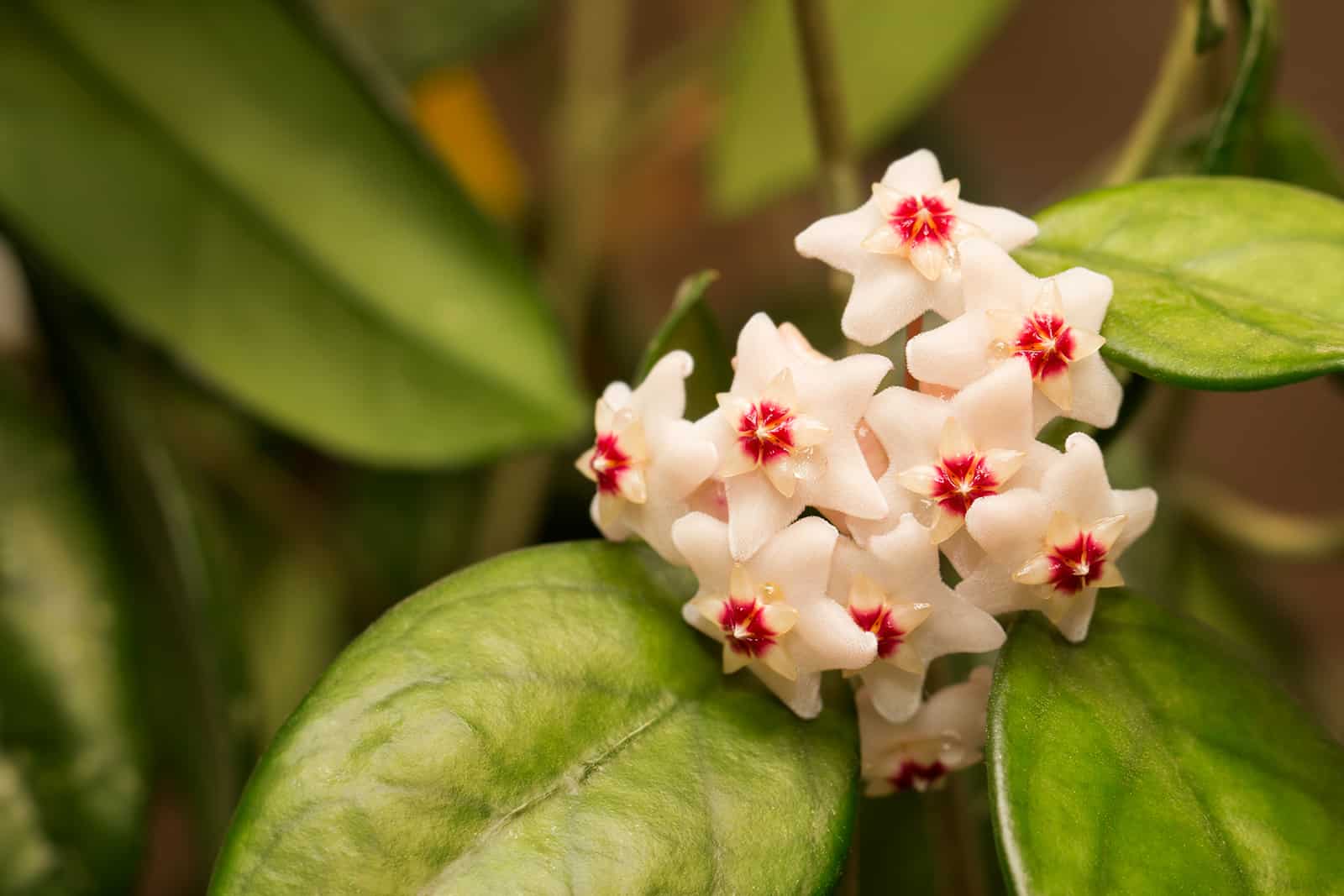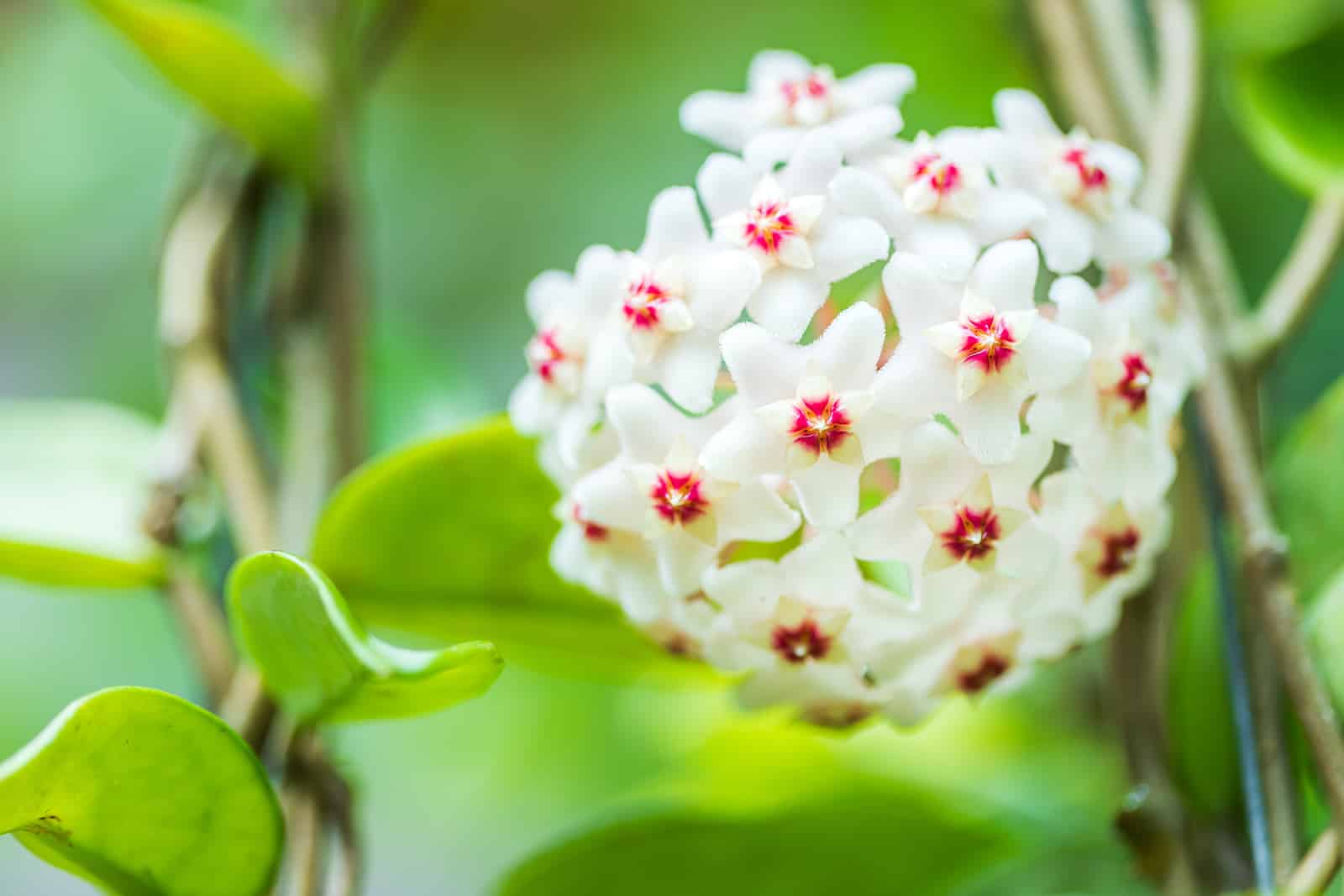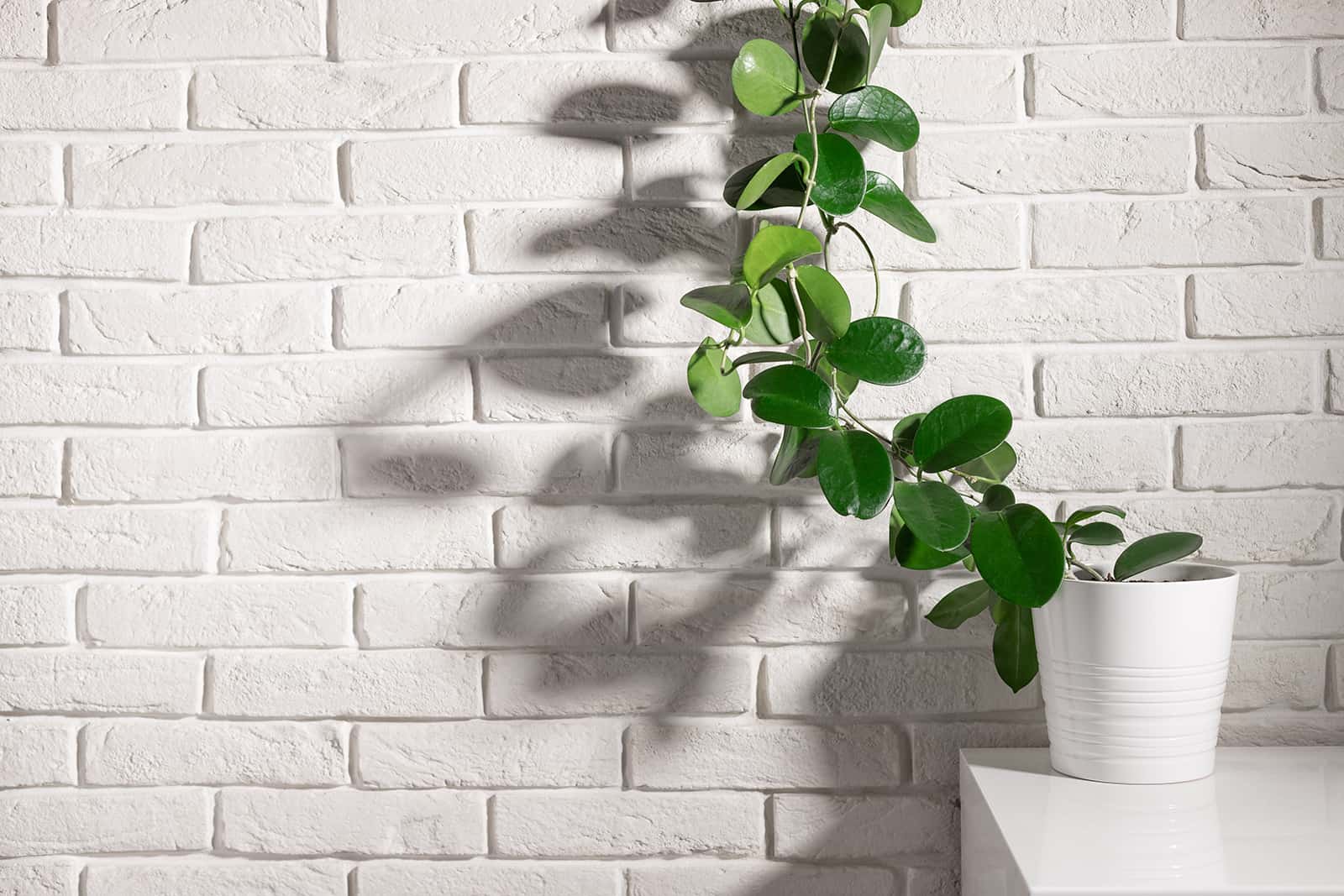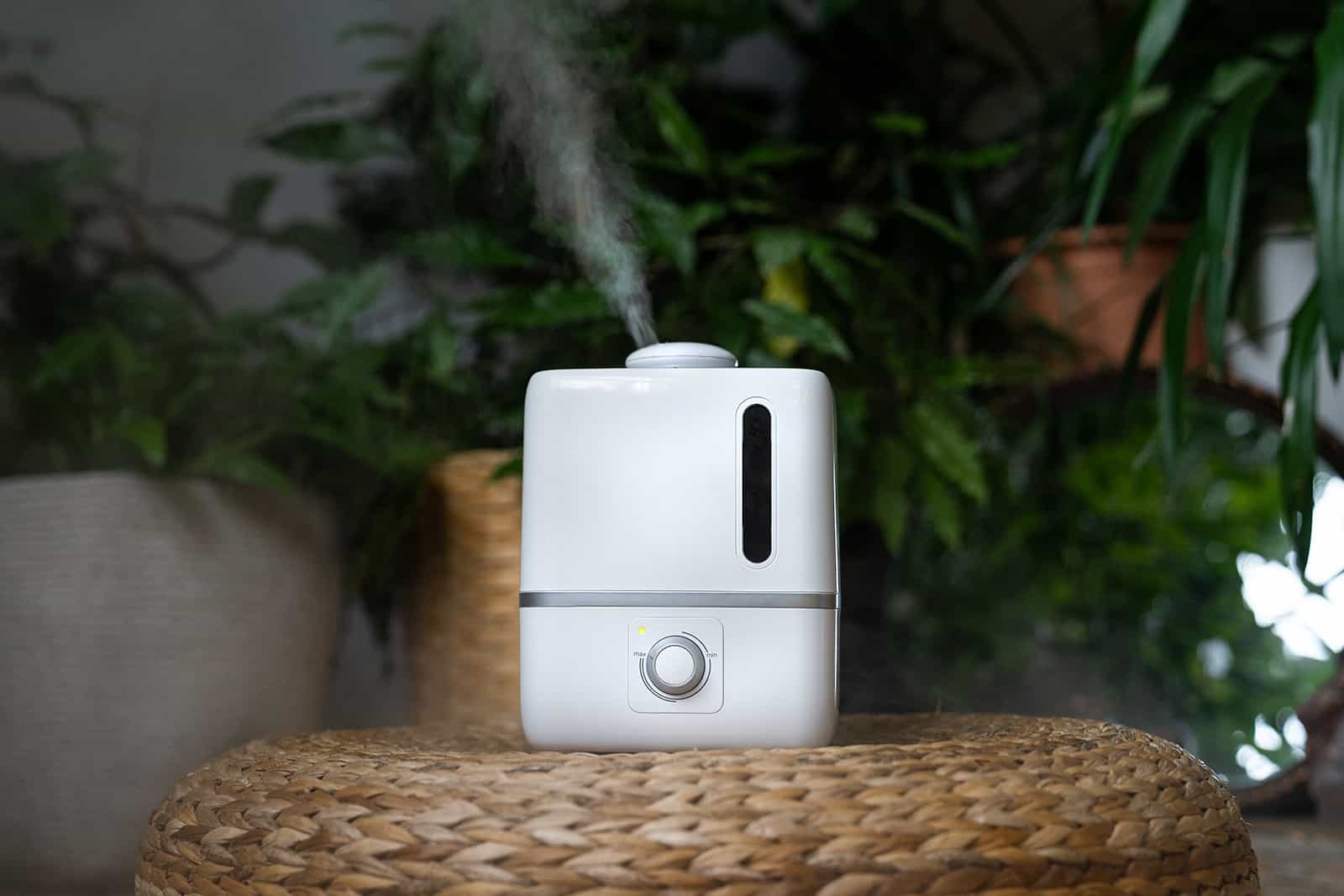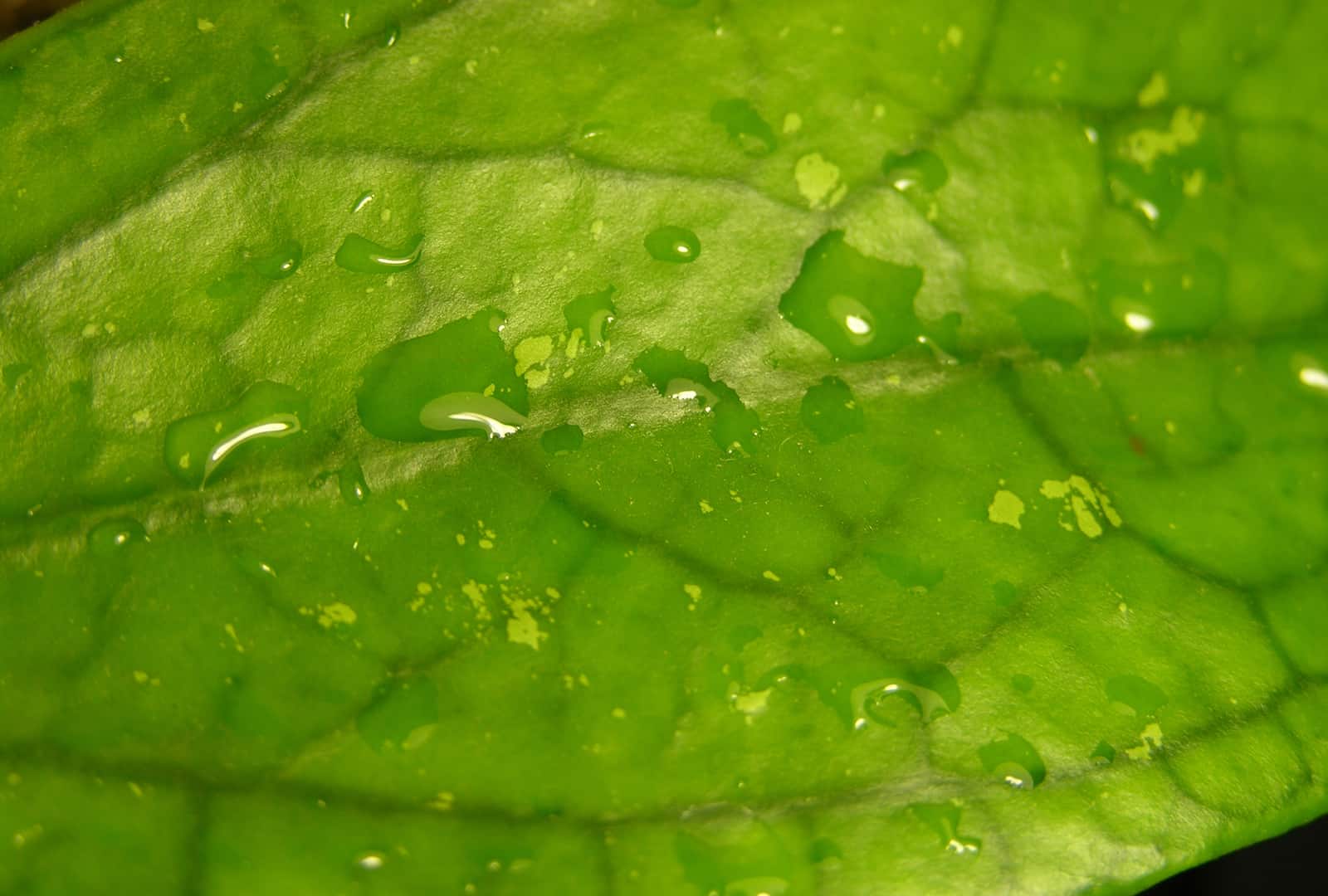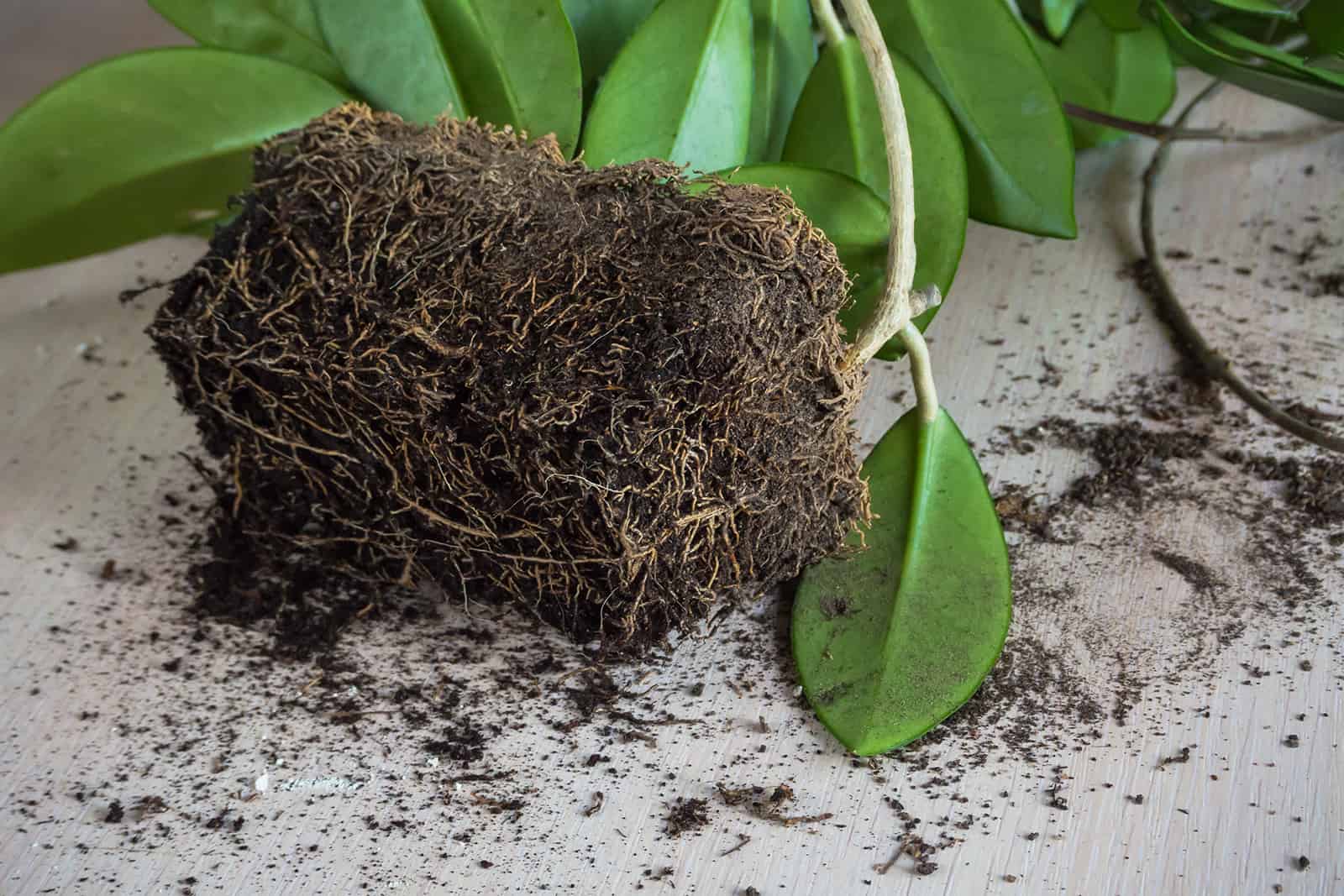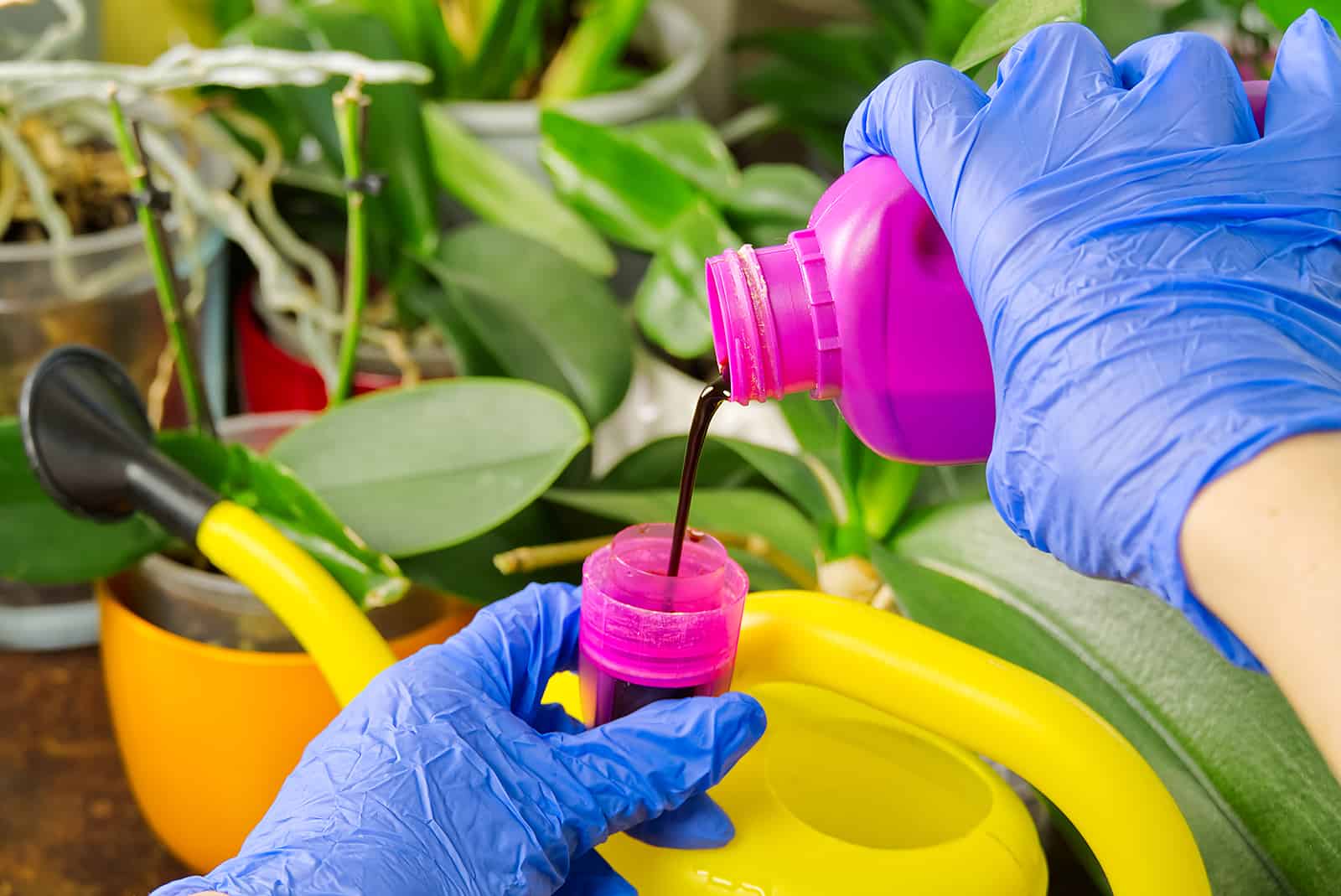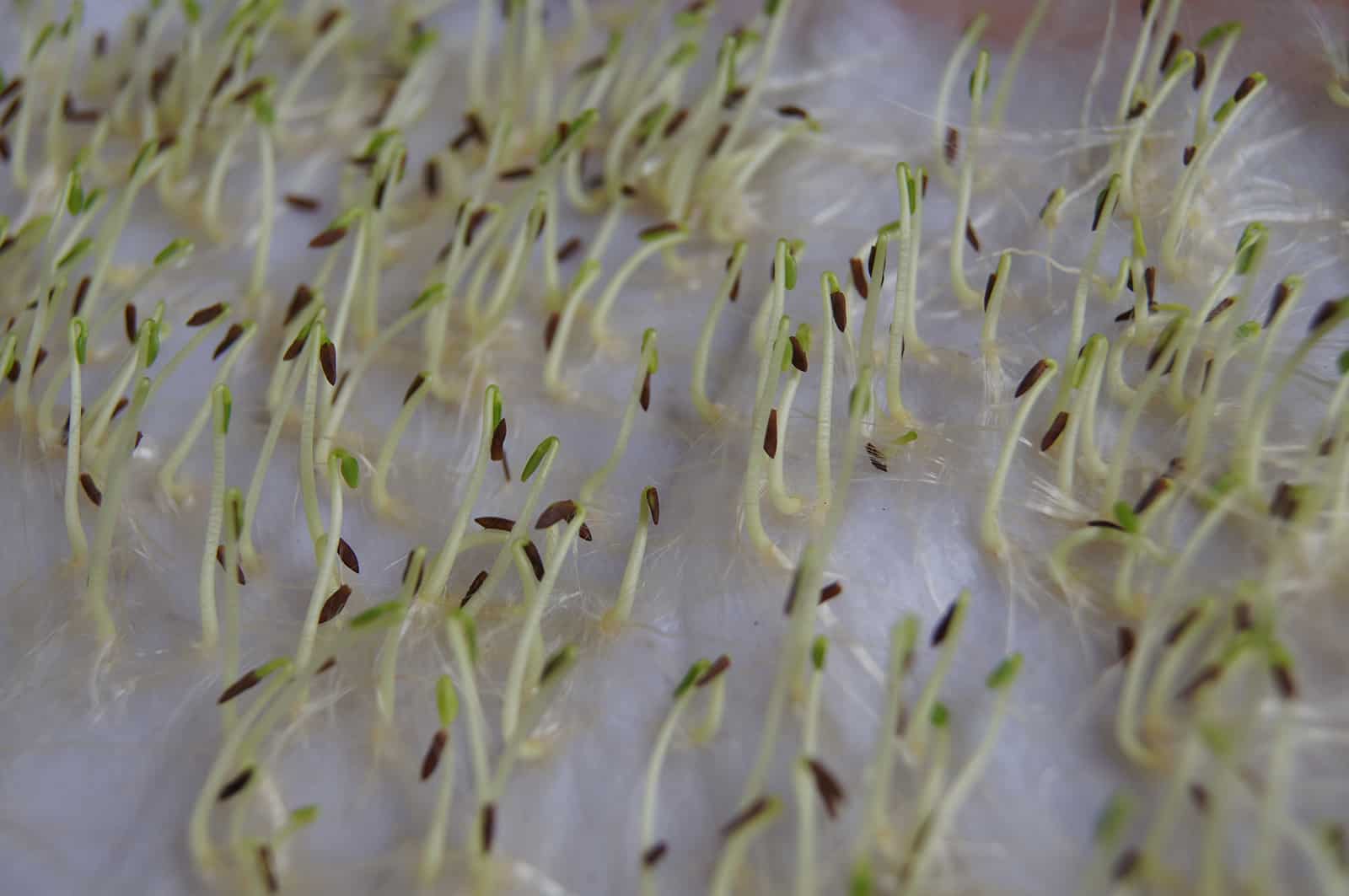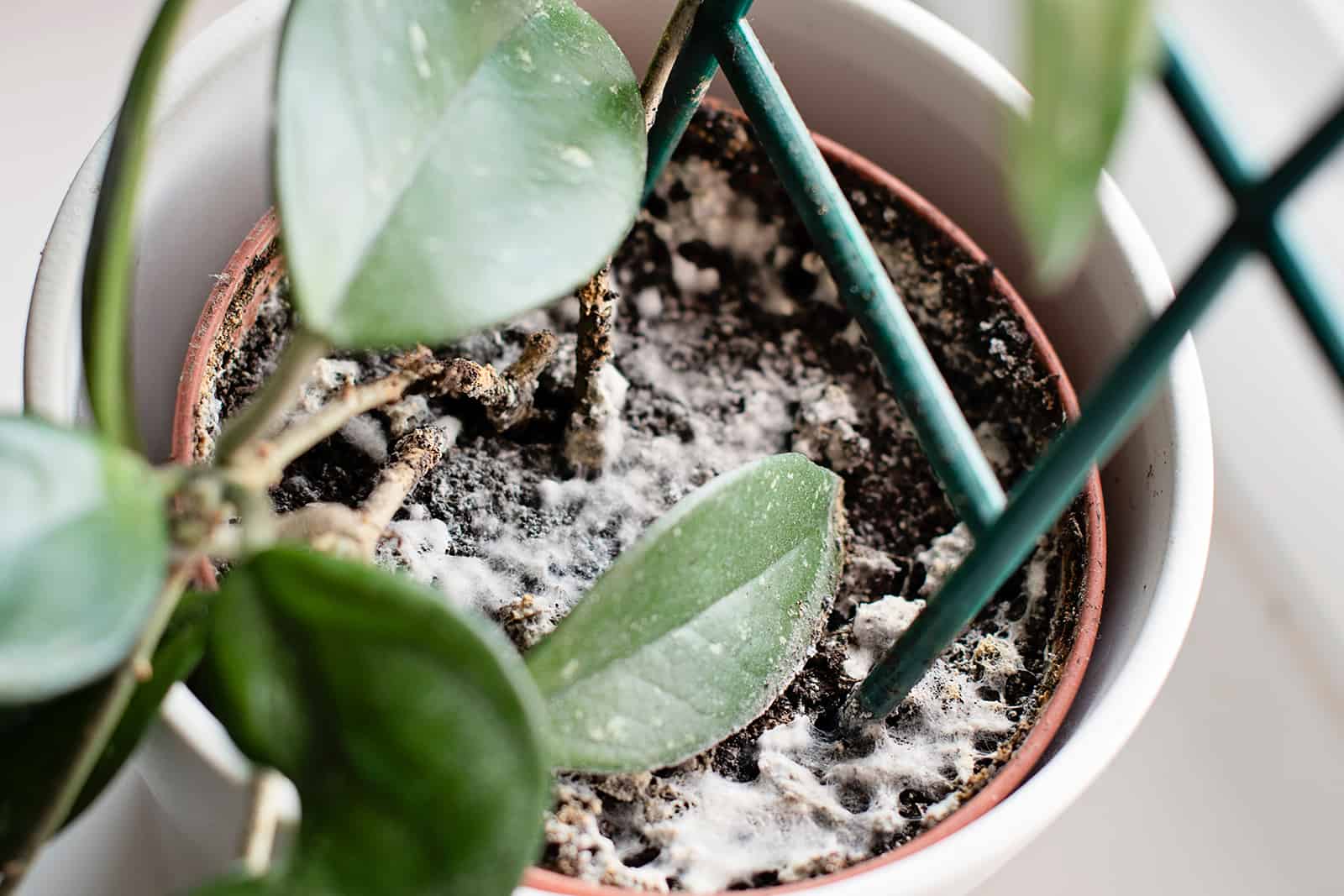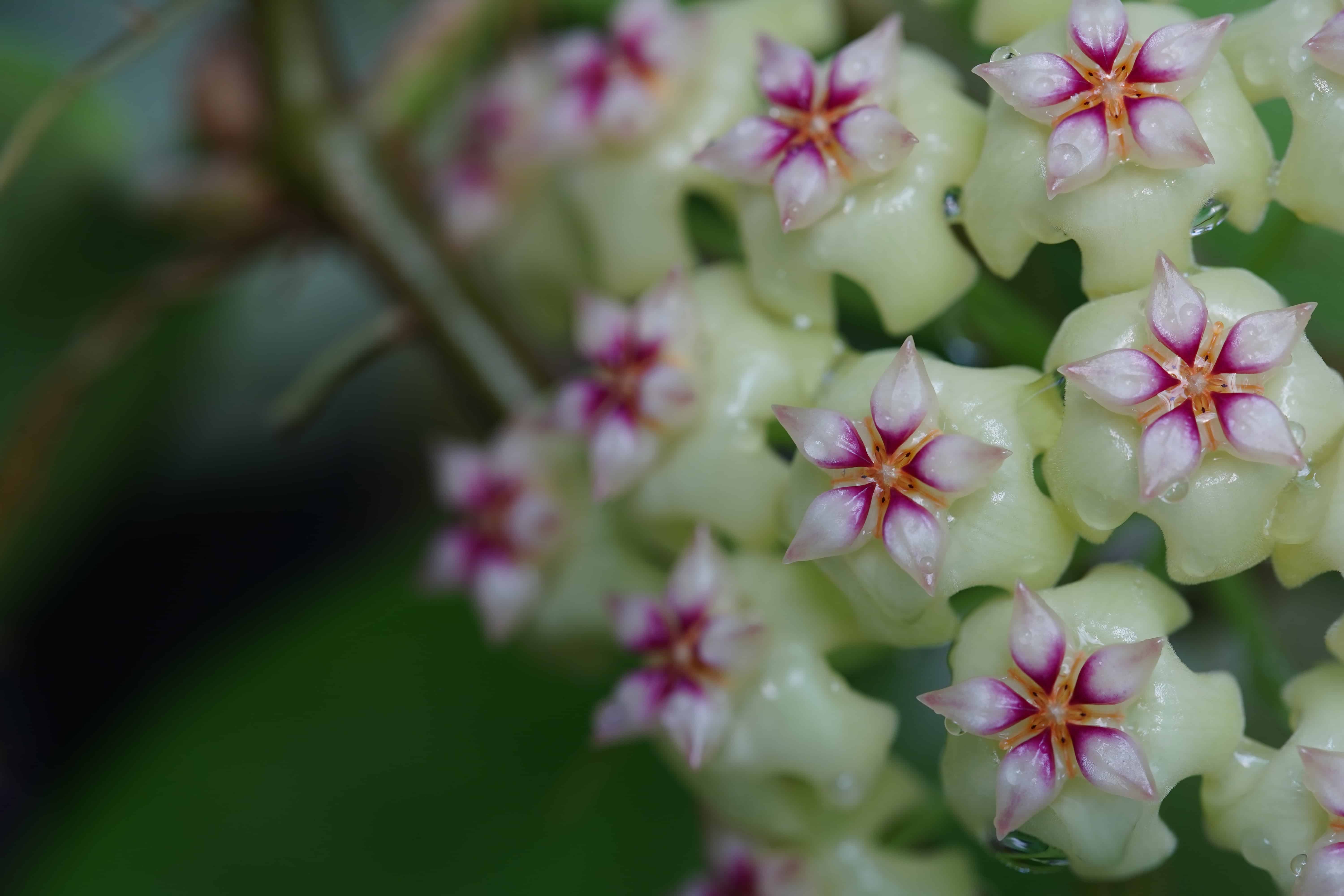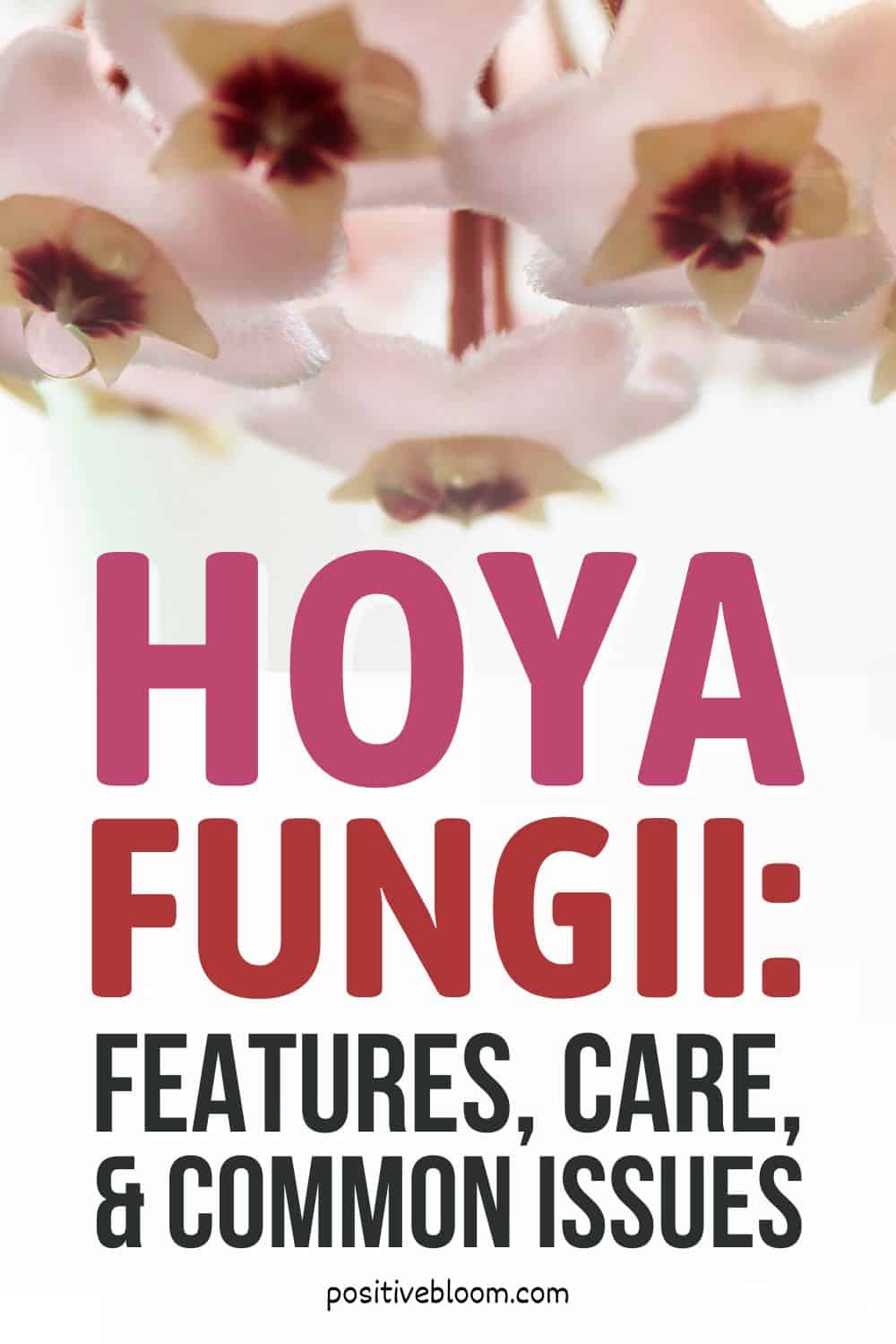If you are a beginner at growing plants, I know a perfect choice for you: the Hoya Fungii. This would make a great addition to your garden, even If you’re an experienced plant grower.
When I found out about this Hoya plant, I was intrigued by the “Fungii” part of its name. I honestly thought it might be some infectious plant!
When you see this Hoya plant, it makes perfect sense that I got one for myself.
This unique flowering plant comes all the way from China. It’s a low-maintenance plant, which makes it even more desirable in my opinion.
I’ll share some handy care tips to help you grow a beautiful and healthy plant in this article.
Before we get started, here’s some basic info:
| Scientific name: | Hoya Fungii Merr |
| Family: | Apocynaceae |
| Genus: | Hoya |
| Species: | Fungii |
| Common names: | Wax plant, Porcelain Flowers |
| Native habitat: | China |
| Type: | Perennial, climbing vine, epiphytic plant |
| USDA hardiness zones: | 10b (up 35 °F), 11 (above 40 °F) |
| Height: | 15-20 ft. (native habitat), up to 6 ft (houseplant) |
| Foliage: | Evergreen |
Let’s find out everything you need to know about this Hoya plant!
What Does A Hoya Fungii Look Like?
A great thing about the Fungii plant is that it can grow in various mediums. For example, you can grow it in a hanging basket and enjoy the beautiful vines spreading, or you can grow your Fungii plant in terrariums or greenhouses.
Whichever you choose, you’ll be undoubtedly amazed by its stunning appearance!
Leaves & Flowers
The Fungii’s leaves are dark green and velvety to the touch. The Wax plant’s leaves are oval-shaped and look stunning when hanging from a basket.
Hoya plants come from the Apocynaceae family, also known as the family of flowering plants. The other fascinating feature of this plant is its blooms.
The Porcelain plant’s flowers are pretty small, and they look like giant semi-spherical flowers as they grow in bunches (umbel).
They are pinkish-white and have red centers. Can it get any better? Yes! The flowers have a sweet fragrance, so your home will be both well decorated and smell great.
You can expect the plant to produce flowers in late spring and early fall. Of course, you’ll have to give it proper care if you want to see your Wax plant blooming.
Use our care tips from the “How To Care For Hoya Fungii” section later in this article, and you won’t have to worry.
Hoya Fungii is often mistaken for Hoya Carnosa, but the difference between the two is in the vines. If they are placed next to each other, you will see the vines of the Fungii have more pronounced veins.
Here’s a video on the plant’s appearance:
Growth
The Wax plant is a vining climber and can grow up to 6 feet as a houseplant. This means you’ll have to ensure more space for this Hoya plant than other common houseplants.
If you want your Porcelain Flower to grow healthy and reach its full size, I suggest supporting it with a trellis or moss stick.
How To Care For A Wax Plant
When I say it’s easy to care for this semi-succulent plant, I really mean it!
The Fungii thrives in bright indirect light, high humidity, and moderate temperatures. It also appreciates well-draining soil.
It’s not a heavy feeder, so you won’t need to pay close attention to see if it needs extra food.
The Fungii isn’t fussy about watering, either, just be sure never to overwater it.
Let’s get into details!
Light Requirements
Your Wax plant will love you if you find a place for it with bright indirect light in either a south or east-facing window.
An east-facing window will give your plant an appropriate dose of morning sun. If it fits better in a south-facing window, ensure that it doesn’t receive direct midday sunlight.
The Fungii’s leaves are sensitive to direct sunlight, which may cause them to turn yellow and burn. When the leaves suffer from sunburn, they won’t be able to recover and will have to be removed.
If you’re afraid direct sunlight may reach your precious Hoya plant, place a sheer curtain over the window to create partial shade. This will mimic the tropical environment where this plant grows under the rainforest canopy.
If you decide to put your plant outdoors, place it under a tree.
I like this plant as it’s one of the plants that grow in low light conditions; however, don’t grow it in low light for an extended period. It won’t be too bad if it doesn’t get bright light for a short time, unlike other houseplants like Monsteras.
I grow many plants, and know the amount of light each houseplant needs, but it can be pretty tricky for beginners. Purchase a light meter until you master this skill (don’t worry, it won’t take long).
Temperature Requirements
The east Asian tropics provide high humidity, partial shade, warmer temperatures, and good rainfall. We’ve discussed light, and now I want to share a couple of tips on temperature with you.
If you want your Fungii plant to thrive, set the thermostat anywhere between 50 and 78 degrees Fahrenheit. Compared to other Hoya plants, the Fungii requires slightly lower temperatures.
However, a Fungii plant might experience stress if the temperature drops below 50 degrees Fahrenheit, and the same goes for temperatures above 80 degrees.
Simple, right? There’s one other thing I would like to mention, which is that I always set the temperature closer to the bottom end: 50 degrees Fahrenheit in this case.
The Fungii’s flowers need lower temperatures in order to bloom. Be careful though; lower doesn’t mean freezing. Frost is the biggest enemy of this plant. Fungii plants grow well outdoors, but only in hardiness zones 10 and 11.
Bring your Fungii indoors during winter if you live in other zones to avoid consequences.
Fungii plants won’t grow well in high temperatures, so avoid placing them near heating sources (radiators or fireplaces). High temperatures will prevent new leaves from growing.
Humidity Requirements
Tropical plants are used to humid conditions, and the Fungii is no exception. When looking for a perfect spot for your Fungii, make sure the humidity is over 50%.
It will grow well anywhere between 40% to 60% humidity. I’m telling you this as our homes generally don’t have higher humidity, so if it’s 40% (not lower), the Fungii will still grow well.
There are a couple of things you can do to increase humidity. I suggest you invest in a hygrometer, which will show you the percentage of humidity present in your home.
If it’s constantly lower than 40%, you’ll have to increase it somehow. Luckily, there are ways to do so.
Ways To Increase Humidity
I’ll start with an expensive option, as it’s also the most effective. A humidifier is a great device that will increase humidity levels precisely. However, as I said, they’re expensive and also need to be cleaned and checked regularly.
The second thing you can do is place your Fungii near other plants like Philodendrons or Alocasias. You could also move your plant to the kitchen or bathroom, which both have naturally higher humidity due to water evaporation.
I’m sure you have a shallow dish somewhere in your house, and it will be perfect for making a pebble tray. Add stones to it and place your Fungii plant over it.
Please make sure the roots don’t come into contact with the water as excess water will cause them to rot.
Mist your Porcelain plant 2-3 times a week to keep the leaves moisturized, but be careful not to over-mist as it could cause softening and rotting.
Another important thing to remember is that high humidity means higher moisture, and this will create the perfect environment for fungal diseases and mold.
Keep a few windows open or place the plant near a vent. Be sure to leave a suitable distance between the Fungii and windows or vents as the plant won’t tolerate cold drafts.
Watering
I mentioned that the Fungii is a semi-succulent plant, but what does this actually mean?
First off, the Fungii plant has a small root system compared to other houseplants, so its leaves don’t depend entirely on the roots when it comes to water needs and nutrient uptake.
Secondly, the leaves are fleshy and have the ability to store water. Due to this feature, Fungii plants can withstand extended periods without water (not too long, though).
Both features tell us one important thing: the Fungii plant is prone to overwatering. Two things can lead to this issue: watering either too often or too much.
The Wax plant’s roots are small, and as such don’t need much water. Additionally, the leaves already have water stored, so adding more will only damage the plant.
The ironic thing is that the Fungii doesn’t need much water, but likes moist soil. I know, it doesn’t seem to make sense!
A Fungii’s soil needs to be well moisturized during the summer months, which is its growing season.
What to do, then? As with everything else in life, balance is the key. Fertilizer, water, and sufficient sunlight will balance the entire situation out nicely.
Watering Schedule
This is where you step in. You must create a watering schedule according to the Fungii’s demands.
I always let the soil dry before the next watering as it helps me avoid overwatering. However, don’t let the soil dry out completely as the Fungii can’t tolerate that either. I always wait until the 1-2 top inches are dry, but never let more than half the soil dry out.
There are three ways to check soil moisture: with your finger, a wooden stick, or a moisture meter. Any of these will suffice.
The next essential thing is knowing exactly how to water a Fungii. Deep watering is the answer. Pour water onto the soil, and stop when you see water dripping from the drainage holes.
Don’t return the plant to its original spot until all excess water has disappeared.
Pouring the water will help it reach the roots. If you let the soil drain, it will prevent water from pooling around the roots.
Watering may take time, but it’s worth it as an overwatered Fungii is a big problem.
Soil
Choosing suitable soil is essential for your Porcelain plant. This plant’s biggest enemy is overwatering, so you should select materials that improve drainage.
Fungii won’t grow well in soil that’s too compact or that retains moisture for too long. Most moisture-loving plants will grow well in this kind of soil, but the Fungii is an exception.
Therefore, a combination of materials that improve drainage and help the soil retain water is the best choice for the Fungii plant.
Additionally, the material should improve air circulation within the soil to allow the roots to breathe.
There are a few combinations of potting mixes that will meet the soil requirements for your Porcelain plant.
Use 1 part potting soil (available in all plant stores), 1 part perlite (improves drainage), and 1 part orchid bark (alternatively, you can use coco coir to improve air circulation).
As well as perlite, there are three other materials good for improving drainage:
• Sand
• Pumice
• Vermiculite
Fertilizing
The Fungii will appreciate being fed once a month during the growing season. The fertilizer should be water-soluble and diluted to half strength.
Never apply fertilizer to dry soil as the concentration of chemicals will be higher and end up burning the ground. Wait until after watering.
Oversaturation of the chemicals in the fertilizer will burn your Fungii’s roots and cause the leaves to turn yellow.
Fungii don’t grow actively during the colder months, which means they don’t need fertilization.
The Porcelain plant produces flowers and doesn’t need fertilizing during blooming.
Instead, fertilize the plant before it starts blooming and choose a bloom booster over a fertilizer rich in nitrogen (it promotes leaf growth). You should choose a fertilizer rich in phosphorus, for example, 4-6-3 (the 6 is its phosphorus content).
Bloom booster will increase your Fungii’s flowering.
Pruning
You may assume that this plant needs pruning now you know how tall it should be. However, the Fungii is a vining plant mainly grown in hanging baskets, which accentuate its beauty.
If you don’t want your Fungii to take over your living room, you should prune it often.
This plant is also a climber, which means it needs support. Use a trellis or moss pole if you grow this plant in a container.
If you want a specific shape for your plant, it’s up to you when to prune it.
However, pruning your Fungii is a must if you notice any discolored, damaged, or dead leaves.
One last thing: always sterilize your pruners to avoid spreading infectious diseases
Propagation
You can propagate the Hoya Fungii plant using two methods: propagation by stem cuttings or from seedlings.
If you decide to propagate by stem cuttings, you can place them in soil or water or use sphagnum moss.
Propagation By Stem Cuttings
First, I’ll show you how to take stem cuttings.
• Select a healthy stem (4-6 inches long) and cut it under the lower node. The stem should have at least 2-3 leaves attached.
• Remove lower leaves to see the node. This is an essential step as the roots will grow from there and the leaves retain water, which could destroy the entire process.
Now that you have a stem cutting, let’s see how to plant it in soil.
1. Take a new pot and fill 1/3 of it with the appropriate potting mix.
2. Make a hole in the soil using your fingers and place the stem cutting about two inches deep.
3. Press the soil down around the cutting and make sure the leaves are not touching it to avoid rot.
4. Water the soil and place the pot in bright indirect light.
5. Mist the soil regularly.
If you decide to propagate in water after you get a stem cutting, do the following:
1. Fill a jar with water and place the cutting in it. Again, the leaves shouldn’t be in contact with any water.
2. Place the jar, hopefully with new Fungii, in bright indirect light.
3. Change the water regularly.
You can expect the nodes to develop roots in 2-3 weeks. Place the plant in its original pot when the roots are about 2-3 inches long.
Propagation From Seedlings
First, purchase Fungii seeds and a seedling tray. Some sellers may try to fool you by selling seeds from a totally different plant, so make sure you purchase your Fungii seeds from someone you can trust.
Let’s look at how to propagate a Wax plant from seedlings!
1. Fill the seedling tray with appropriate potting mix.
2. Put the seedlings in the potting mix one by one and gently press them into the soil. Make a space between the seedlings of at least 1 inch.
3. Cover the tray with a plastic wrap to increase humidity and temperature.
4. Place the tray in a warm place with bright indirect light (the bathroom or kitchen will do well).
You’ll notice new growth after a few months. Place each seedling (now with roots and shoots) into a new pot.
Repotting
The Fungii plant likes to be rootbound. The roots are small and it takes them about 2-3 years to start coming out of the drainage holes.
That’s actually the sign to repot. It can take more or less time for the roots to start coming out of the drainage holes depending on the conditions you provide for your precious Fungii.
You don’t need a larger pot when repotting a Fungi as the roots will have too much soil around them, increasing the chances of waterlogging. Consequently, your plant may suffer from root rot.
Furthermore, if you notice any changes like stunted growth, make sure the plant has enough space to grow. You can achieve this by repotting.
Cleaning
I don’t like house chores, but I love cleaning my plants! Why do plants need cleaning? Well, the leaves can get dusty and lose their glossy appearance if you don’t clean them.
Don’t worry, it’s not a demanding task. You just need to dip a soft sponge in water and gently rub the leaves.
The leaves shouldn’t have water on them, so dry them after cleaning.
Common Issues & How To Fix Them
Fungii aren’t prone to diseases, but they do occur occasionally.
On the other hand, this plant is quite susceptible to different pests.
Let’s find out everything about these issues, and also how to solve them!
Pests
Spider mites, scales, and thrips are the most common pests that will aggect a Fungii.
If you spot any pests, isolate your plant before doing anything else.
Spider mites
Spider mites are bugs that leave webbing on the leaves of plants.
Who would have guessed that such tiny creatures could kill your Fungii if left untreated?
They suck the Fungii’s sap and mainly hide on the undersides of leaves.
A few steps can help you get rid of these uninvited guests.
• GIve your Fungii a heavy shower.
• Apply insecticidal soap to get rid of larvae or eggs, and repeat the treatment a few times. I use neem oil, but you can purchase some other repellent if you prefer.
• Increase humidity and lower the temperature as spider mites love warm and dry places.
• If you want an instant removal method, leave the plant in the bathroom for a while.
Scales
If you notice brown lumps on the leaves, scales are the likely culprit. They hide under these lumps and suck the sap of your precious plant.
First, try to scrape the little rascals away using your fingernails or a toothbrush.
Rub the leaves with insecticidal soap until you make sure there isn’t any left (keep calm and try not to damage the leaves).
I spray neem oil after I’m done with the soap as I don’t want them coming back.
Diseases
The two fungal diseases that most commonly affect Fungii plants are botrytis blight and sooty mold.
If you notice gray spots on the leaves and stems, your Fungii may be suffering from botrytis blight. It can cause large patches on the leaves that soften over time, and eventually fall off if left untreated.
On the other hand, if aphids or scales are in contact with the leaves for an extended period, your plant might suffer from sooty mold.
If you notice honeydew on the surface of your Fungii’s leaves, act immediately as this may kill the leaves completely!
Remove any leaves suffering from severe infection and then apply a strong fungicide.
FAQs
Is the Hoya Fungii toxic?
The wax plant isn’t toxic and is safe for humans and pets. This is another thing that makes this plant the perfect choice for your collection.
Is the Hoya Fungii rare?
The Hoya Fungii is a rare plant, but it’s easily propagated. It should become more available when it gets more popular.
Which Hoya is the most fragrant?
The most fragrant Hoya is Hoya Odorata, also known as the Fragrant Wax plant. It looks great when grown in hanging baskets.
If you decide to grow Hoya Odorata, your house will look and smell better.
Which Hoya is easiest to grow?
The Hoya Carnosa is a beginner-friendly plant in its standard green and variegated cultivars, like the Krimson Princess and Krimson Queen. These are also the most common Hoya plants.
Wrapping Up
Now that you know everything about the Hoya Fungii, I see no reason not to add one to your plant collection!
It would be a great first plant as it’s easy to care for. It also combines well with Hoya Linearis.
Why don’t you add one to your wish list today?
Until next time!
Like this post? Share or pin it for later!

